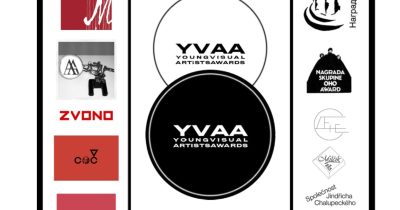Katarzyna Krakowiak, living in Gdansk artist, rewarded, among others on the Biennale of Architecture in Venice (2012) and artistic award of City of Gdansk „ Splendor Gedanensis” (2013), opens on 26th of June at 7 p.pm in the Armory Academy of Fine Arts, her first solo exhibition in Gdansk – the first shock of great escape. Exhibition is curated by Patricia Rylko, who worked in collaboration with prof. Jack Dominiczak, organized by City Culture Institute. The exhibition will be open from 27th of June till 6th of July 2014 (everyday 3 p.m. – 8 p.m.)
Katarzyna Krakowiak
the first shock of great escape / pierwszy wstrząs ucieczki
Opening: 26th of June, at 7 p.m.,
Wielka Zbrojownia ASP, 6 Targ Węglowy, entrance from Tkacka Street
Exhibition dates: 27th of June – 6th of July 2014 (everyday 3 p.m. – 8 p.m.)
Curator: Patrycja Ryłko
Research framework: Jacek Dominiczak
Organizer: Institute of City Culture, Gdańsk
Partner: Academy of Fine Art in Gdańsk
Katarzyna Krakowiak often taps in her practice into the method of confronting contradictory and mutually excluding concepts: she communicates isolated and closed urban spaces in Tel Aviv with her free radio Jaffa; she activates unused parts of buildings, like Warsaw’s Zachęta, among others, with sound compositions; she contrasts the mass of buildings with pure sound, which is the only thing to escape gravitation.
In her latest project at Wielka Zbrojownia in Gdańsk, Krakowiak again focuses heavily on the sensitive interface between two very different narrations which exclude one another temporally and spatially. The artist once again uses the matter of the building in 1:1 scale, which directly determines, in turn, the real dimension of her sculptural, temporal work.
Krakowiak makes full use of the specific dimensions of the building, she annexes the found space – more than seven hundred square metres of void and more than four hundred years of history, which weighed on the internal organisation of the spatial layout. With her intervention in space she defines its parameters anew through a partial introduction of only seemingly abstract spatial divisions. In reality, these are specifically defined divisions based on fixed formulas that regulate functionalism, understood here as the most economical and efficient way of creating public space. Inserting a geometrically elaborate solid into the space at Wielka Zbrojownia, tapping into void within a void, she uses abstracted guidelines which determine mechanically the most programme-wise and spatially complex objects of public space, and what follows, she uses entirely instrumentalised and modular norms of space meant for common use.
Treating functionalism as a physical limitation of space, defining it anew in the categories of systematised limitation that formats the way the building really works, which often contradicts its organic dynamics, Krakowiak highlights the complex relation between the shell of the building and its internal content, capacity of meaning and functional potential. Through a juxtaposition of two formulas which exclude one another temporally and spatially and regulate the workings of the Wielka Zbrojownia space, whose internal logic is beyond doubt not entirely understood at the moment and not used naturally, the artist reveals the hidden codes of dependence, especially those related to communication breakdown, dysfunction and the concept of mistake.





